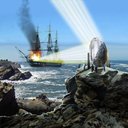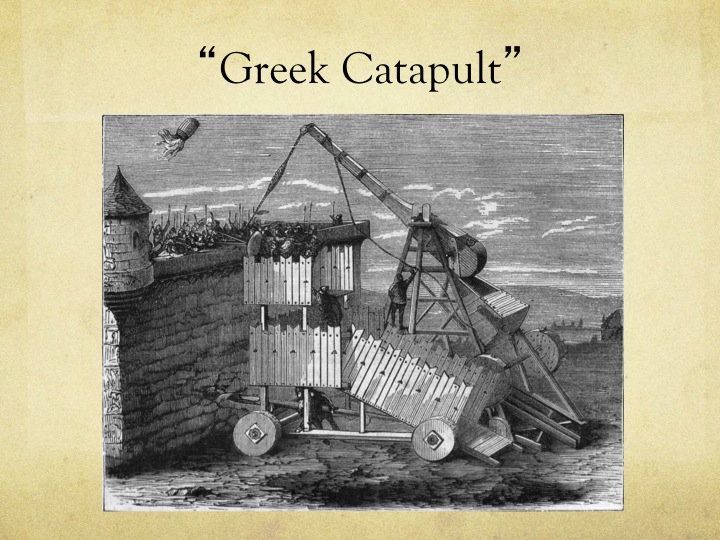
It was also pointed out that since Syracuse faces the sea towards the east, the Roman fleet would have had to attack during the morning for optimal gathering of light by the mirrors. When MythBusters broadcast the result of the San Francisco experiment in January 2006, the claim was placed in the category of "busted" (or failed) because of the length of time and the ideal weather conditions required for combustion to occur. In order to catch fire, wood needs to reach its flash point, which is around 300 degrees Celsius (570 ☏). Again some charring occurred, along with a small amount of flame. The MIT group repeated the experiment for the television show MythBusters, using a wooden fishing boat in San Francisco as the target. It was concluded that the device was a feasible weapon under these conditions.

ARCHIMEDES DEATH RAY PATCH
Flames broke out on a patch of the ship, but only after the sky had been cloudless and the ship had remained stationary for around ten minutes.

In October 2005 a group of students from the Massachusetts Institute of Technology carried out an experiment with 127 one-foot (30 cm) square mirror tiles, focused on a mock-up wooden ship at a range of around 100 feet (30 m). The plywood ship had a coating of tar paint, which may have aided combustion. When the mirrors were focused accurately, the ship burst into flames within a few seconds. The mirrors were pointed at a plywood mock-up of a Roman warship at a distance of around 160 feet (50 m). On this occasion 70 mirrors were used, each with a copper coating and a size of around five by three feet (1.5 by 1 m). The experiment took place at the Skaramagas naval base outside Athens. This would have used the principle of the parabolic reflector in a manner similar to a solar furnace.Ī test of the Archimedes heat ray was carried out in 1973 by the Greek scientist Ioannis Sakkas. It has been suggested that a large array of highly polished bronze or copper shields acting as mirrors could have been employed to focus sunlight onto a ship. René Descartes rejected it as false, while modern researchers have attempted to recreate the effect using only the means that would have been available to Archimedes. This purported weapon has been the subject of ongoing debate about its credibility since the Renaissance. The device, sometimes called the "Archimedes heat ray", was used to focus sunlight onto approaching ships, causing them to catch fire. Centuries later, Anthemius of Tralles mentions burning-glasses as Archimedes' weapon.

214?212 BC), Archimedes destroyed enemy ships with fire. The Archimedes Heat Ray ? myth or reality?Īrchimedes may have used mirrors acting collectively as a parabolic reflector to burn ships attacking Syracuse.The 2nd century AD author Lucian wrote that during the Siege of Syracuse (c.


 0 kommentar(er)
0 kommentar(er)
